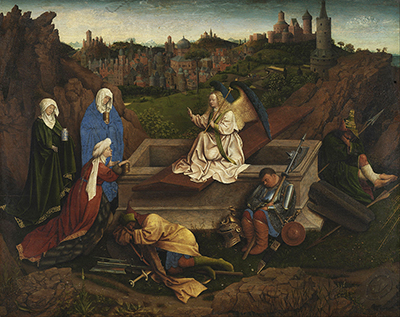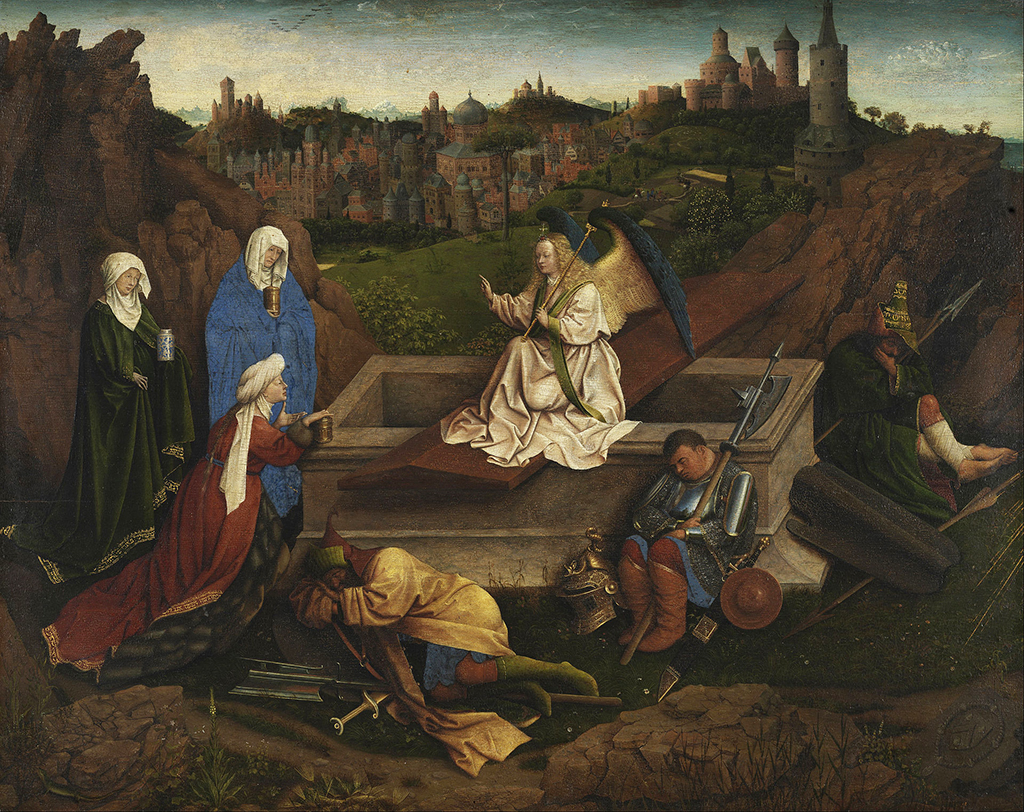The Three Marys at the Tomb dates from around 1410-1426 and is known to have come from Jan van Eyck's workshop, most likely from the hand of his brother, Hubert. It can now be found in the Museum Boijmans Van Beuningen, Rotterdam and recently underwent a detailed scientific study which unveiled new information about the piece.
There have been many different views around the attribution of this painting, with some believing that Jan was at least partially involved in its creation. Over the centuries many different opinions have been put forward and no real conclusion had ever been made. Part of the problem may well have been the lack of work remaining from Hubert, meaning it is hard to compare the styles of these two brothers and look for differences. There have also been some who accept it to be from this workshop, but actually from neither of the brother's hands. All that we can learn from Hubert's work is in his contribution to the Ghent Altarpiece, which is well known and beyond dispute. The wide range in estimated date is also impacted by the confusion of its creator, with the 1410-1426 mark lasting right up into Hubert's death.
The scene itself captures several figures in the foreground a tomb, with a beautifully crafted cityscape in the background, along with some rolling hills in between in order to add a sense of perspective and link the two sections of the composition together. The three marys captured are The Virgin Mary, Mary Magdalene and Mary Salome and their inclusion links to a passage within the New Testament. There are three sleeping soldiers whilst the women look on in sorrow towards the entombment of Christ. The city in the background is most likely to be an artist's impression of Jerusalem.
The overall piece measures 90cm in width, 71.5cm in height. In can be found at the Museum Boijmans Van Beuningen which is located in the Dutch city of Rotterdam and offers an impressive selection of work from a good variety of famous artists. They own a number of Wassily Kandinsky paintings, for example, as well as The Wayfarer and Nest of Owls by Hieronymus Bosch, On the Threshold of Liberty and Not to be Reproduced by René Magritte as well as The Face of War Salvador Dalí. In all, this is a remarkably diverse selection of European art, covering everything from the Northern Renaissance to the Surrealists of the 20th century, and many more besides. It remains one of the most impressive collections within the Netherlands and receives a large number of visitors each and every year.





